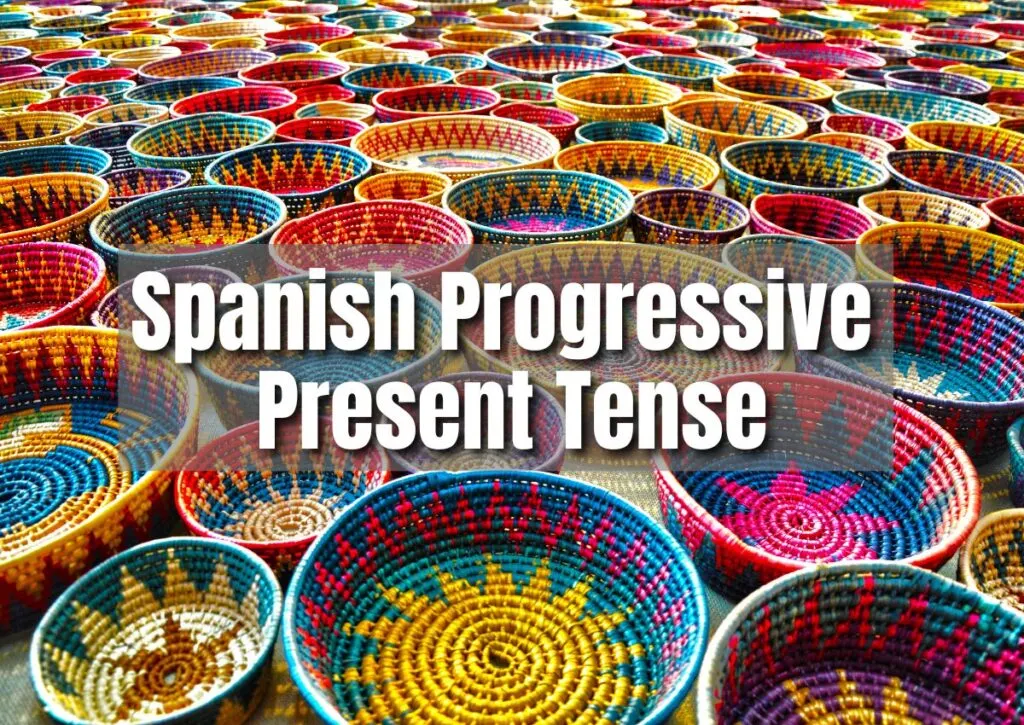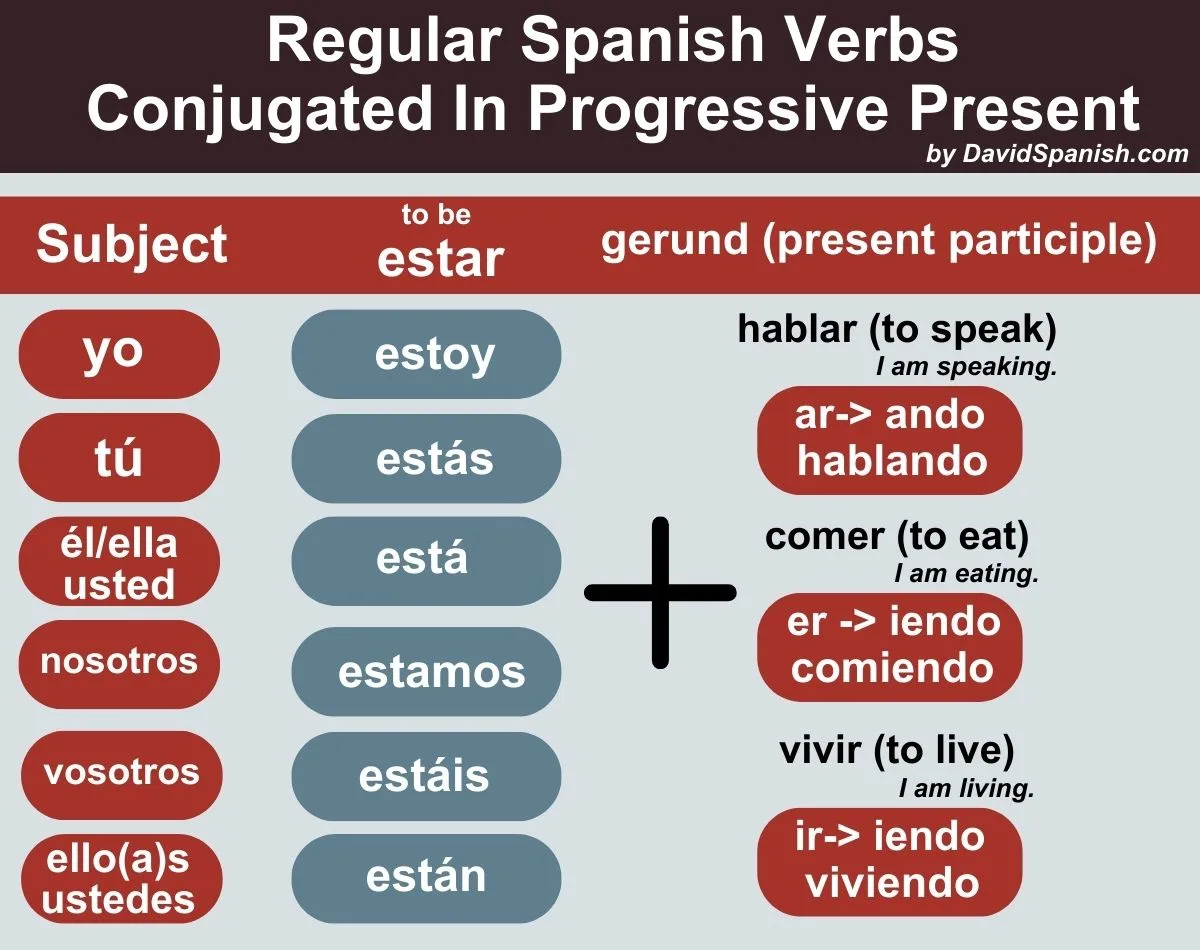What is the progressive present tense in Spanish?
In Spanish, the present progressive tense equates to is + verb + -ing in English. It is used to express an action that is in progress and not completed. For example, yo estoy hablando (I am speaking). The present progressive tense in Spanish is formed by combining the present tense of estar (to be) with the present participle.

How to form the Spanish progressive present tense
To form the progressive present, combine the present tense of estar (to be) with the gerund.
The gerund (also called the present participle) for regular AR verbs is formed dropping the -ar from the infinitive and adding the ending -ando. For example, cantar (to sing) becomes cantando (singing).
For regular IR verbs and ER verbs, drop the -ir and -er from the infinitive and add the ending -iendo. For example, comer (to eat) becomes comiendo (eating) and vivir (to live) becomes viviendo.

Present participles with irregularities
There are some Spanish verbs which have irregularities when forming the present participles.
-yendo
For ER and IR verbs which have stems ending in vowels, the present participle ends -yendo. For example, leer (to read) becomes leyendo (reading) and traer (to bring) becomes trayendo (bringing).
For IR verbs under this category, oír (to hear) becomes oyendo (hearing) and incluir (to include) becomes incluyendo (including).
O > u for IR verbs
For some IR verbs, the -o in the stem becomes a -u in the present participle. For example, dormir (to sleep) becomes durmiendo (sleeping) and morir (to die) becomes muriendo.
E > i for IR verbs
For some IR verbs, the -e in the stem becomes -i in the present participle. For example, decir (to say) becomes diciendo (saying), pedir (to ask for) becomes pidiendo (asking for) and venir (to come) becomes viniendo (coming).
When to use the present progressive
The main purpose of present progressive is to express that an action is ongoing in the present and is not completed.
- Yo estoy haciendo mi trabajo. I am doing my work.
The present progressive is used to express actions which are ongoing and not complete, as well as actions which are occurring gradually over time and not complete.
- Estoy leyendo un libro. I am reading a book.
- Estamos aprendiendo los verbos. We are learning the verbs.
In certain situations, Spanish may use the present tense while English uses the present progressive.
- Yo traigo la pizza. I’m bringing the pizza.
Use the present progressive to emphasize “at this very moment”.
- Qué comes? What do you eat (in general)?
- Qué estás comiendo? What are you eating (at this very moment)?
To contrast an action which occurs regularly versus a one-time event, use the present tense for the regular action and present progressive for the one-time event.
- Normalement como tacos pero hoy estoy comiendo enchiladas. Normally I eat tacos but today I’m eating enchiladas.

Present progressive in different tenses
The present progressive can also be used in different tenses. Note that no matter which of the following tense are uses, the actions are ongoing and not complete.
- (preterite) Yo estuve diciendo la verdad. I was telling the truth.
- (imperfect) Yo estaba diciendo la verdad. I was telling the truth.
- (present) Yo estoy diciendo la verdad. I am telling the truth.
- (future) Yo estaré diciendo la verdad. I will be telling the truth.
For expressing an action that’s going to happen, Spanish uses the near future tense (ir [to go] + a + infinitive) while English uses the present progressive of go.
- Voy a cantar. I am going to sing.
Conclusion – Spanish progressive presnt
That it! ¡Esperamos que están haciendo progreso! We hope you’re making progress!
- La Bamba Meaning, Spanish Lyrics & English Translation - May 4, 2024
- Bésame Mucho Meaning, Spanish Lyrics & English Translation - May 3, 2024
- Querida – Lyrics, Meaning & Translation - May 2, 2024
